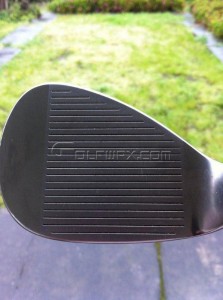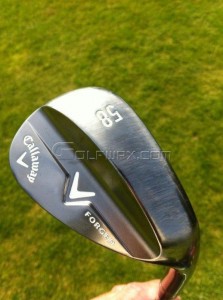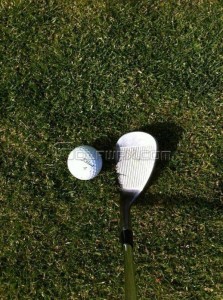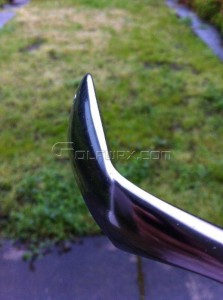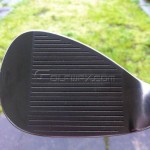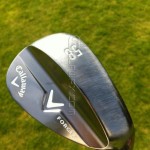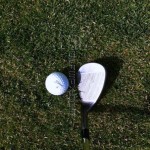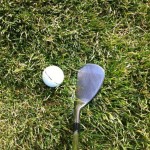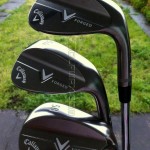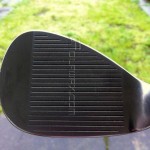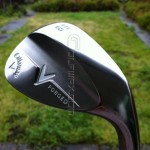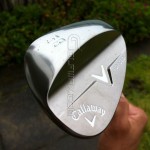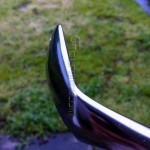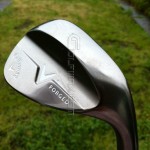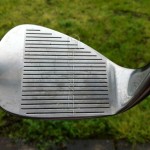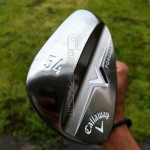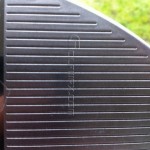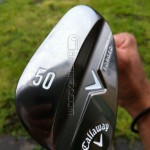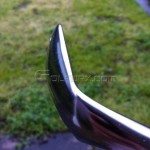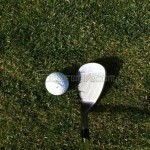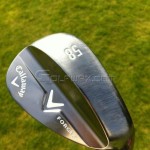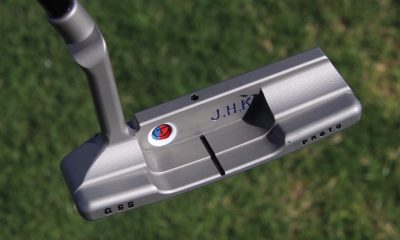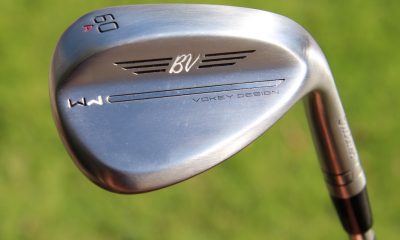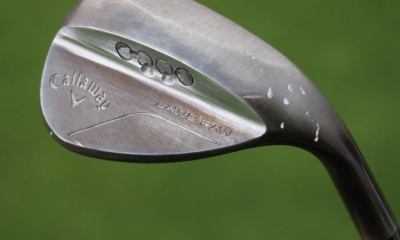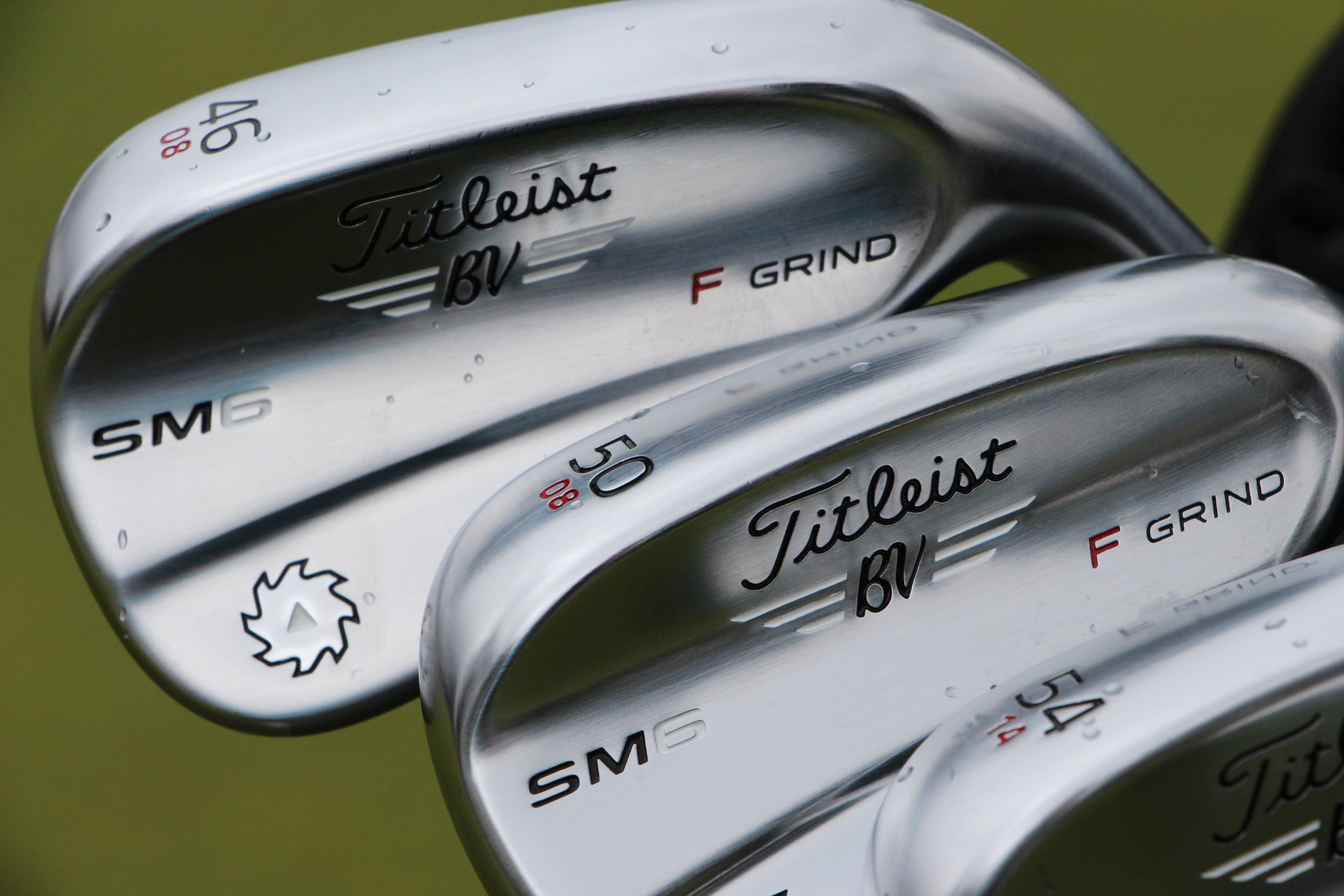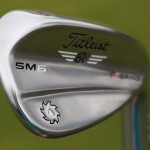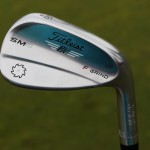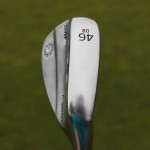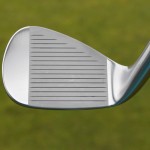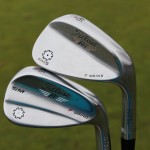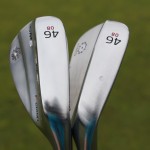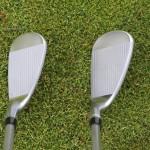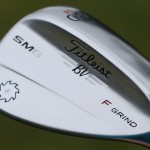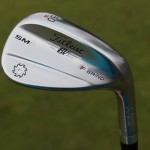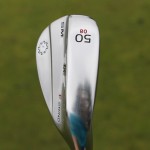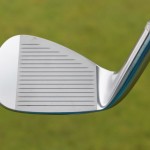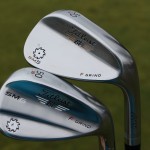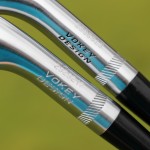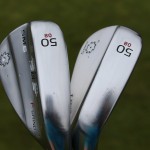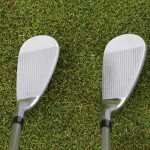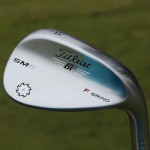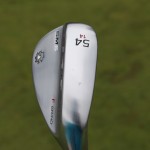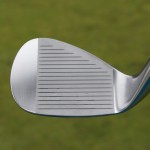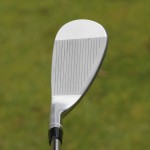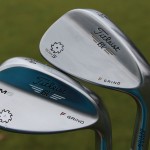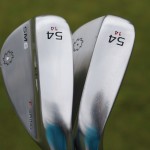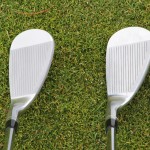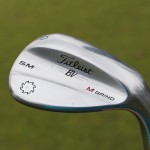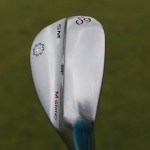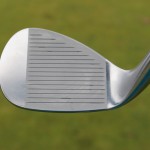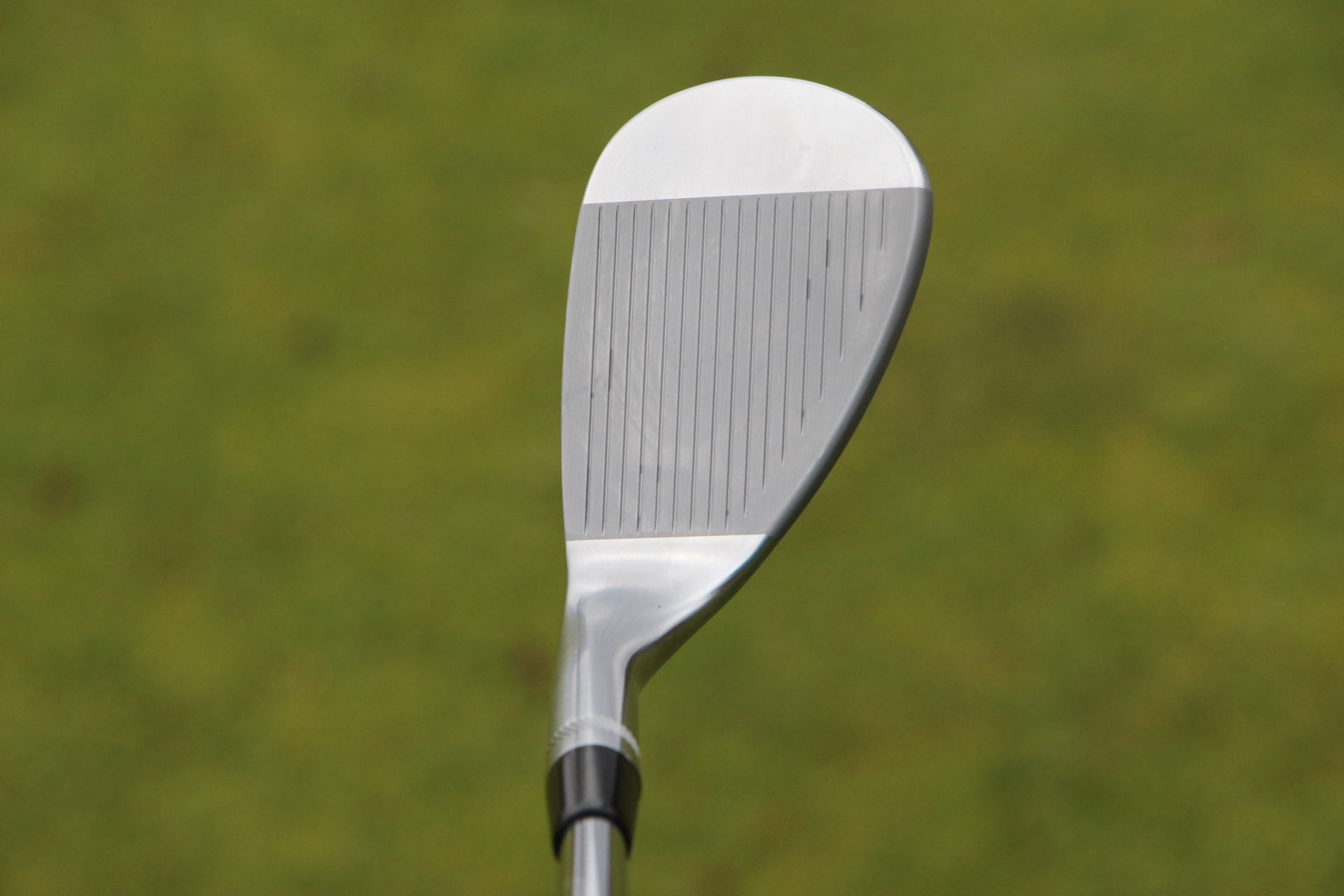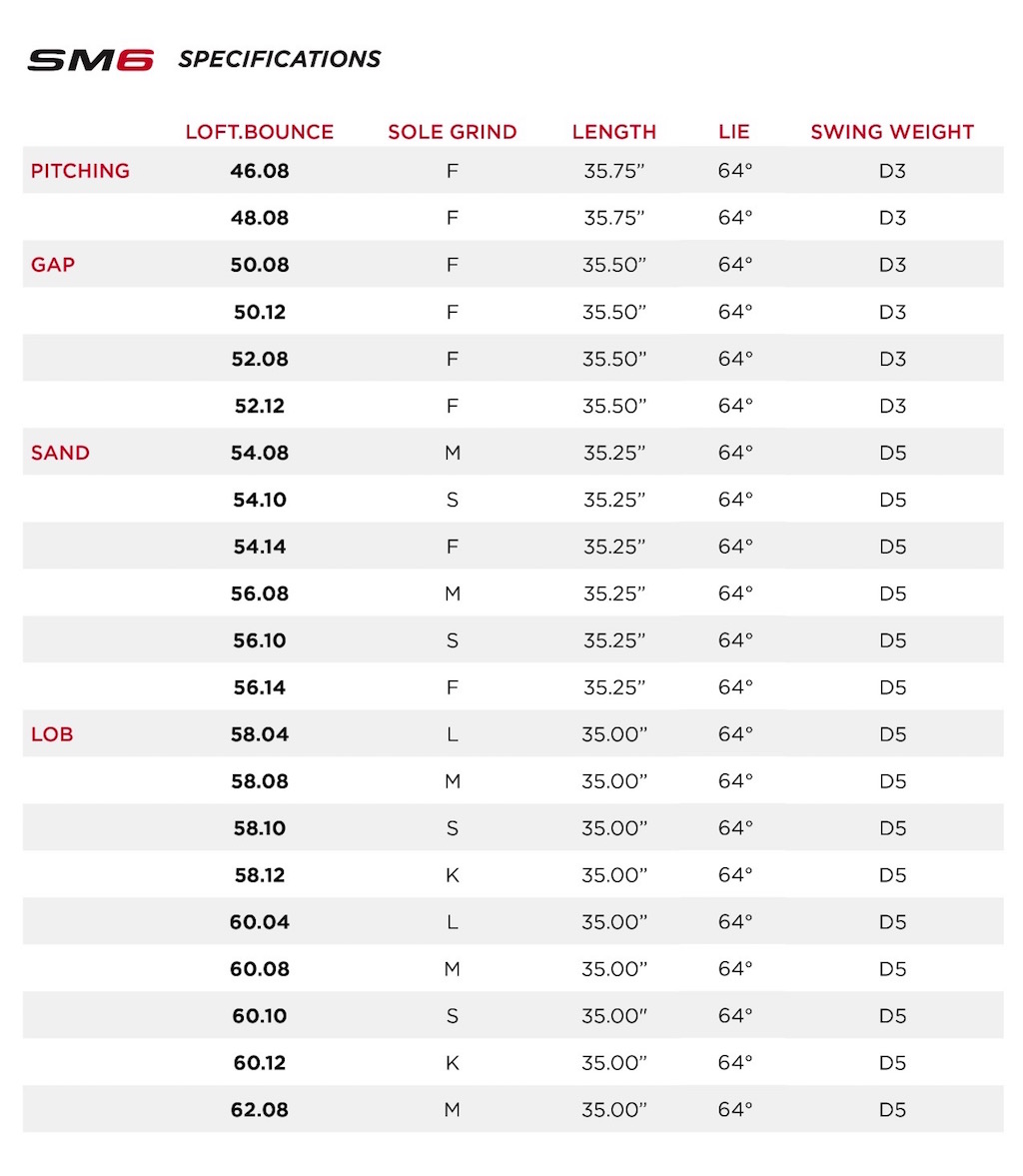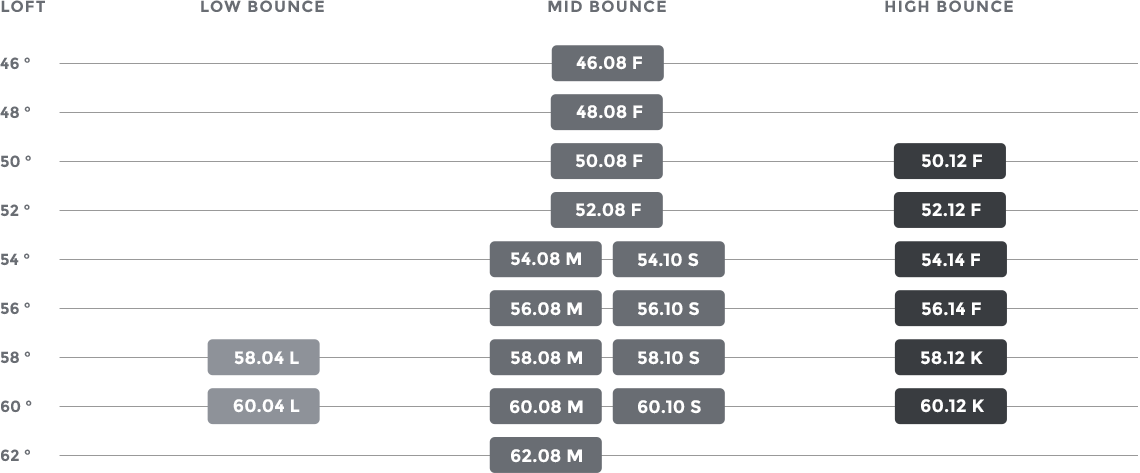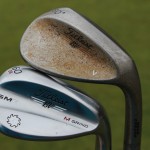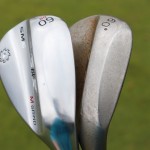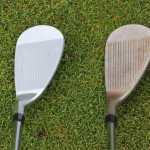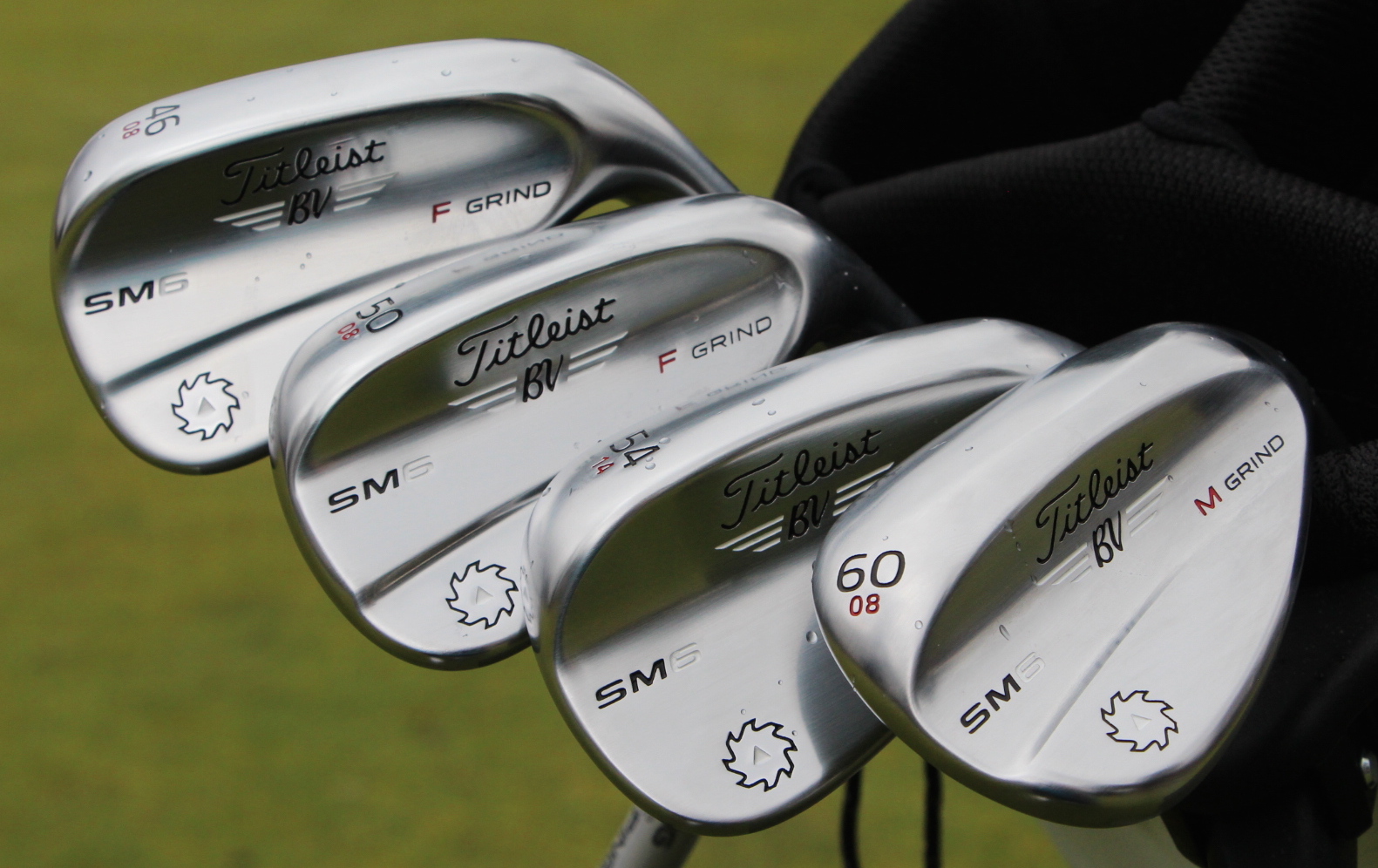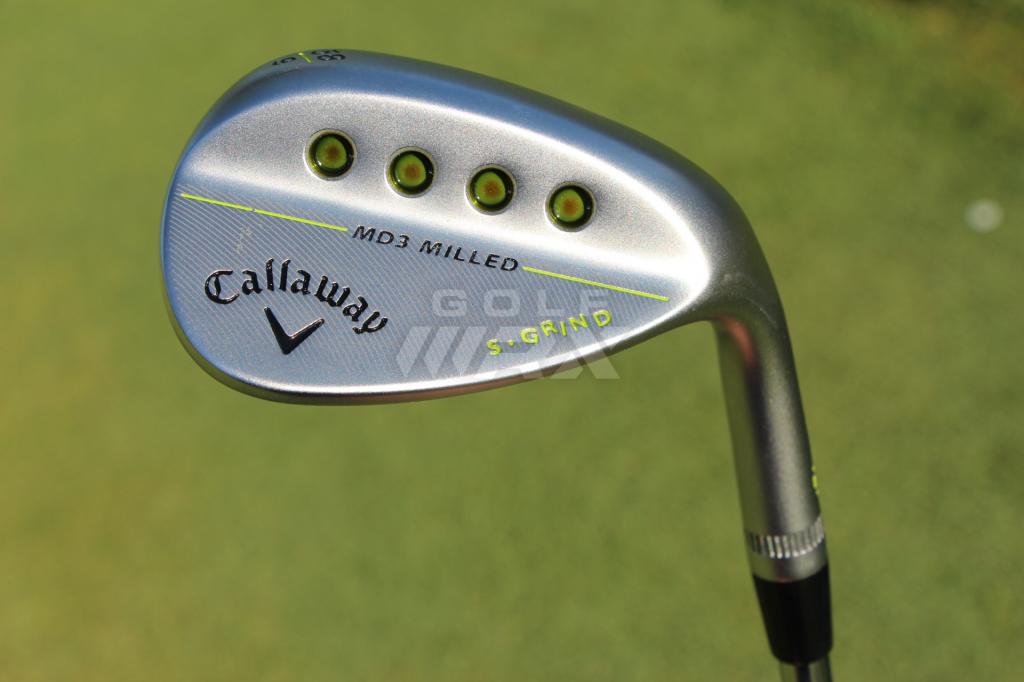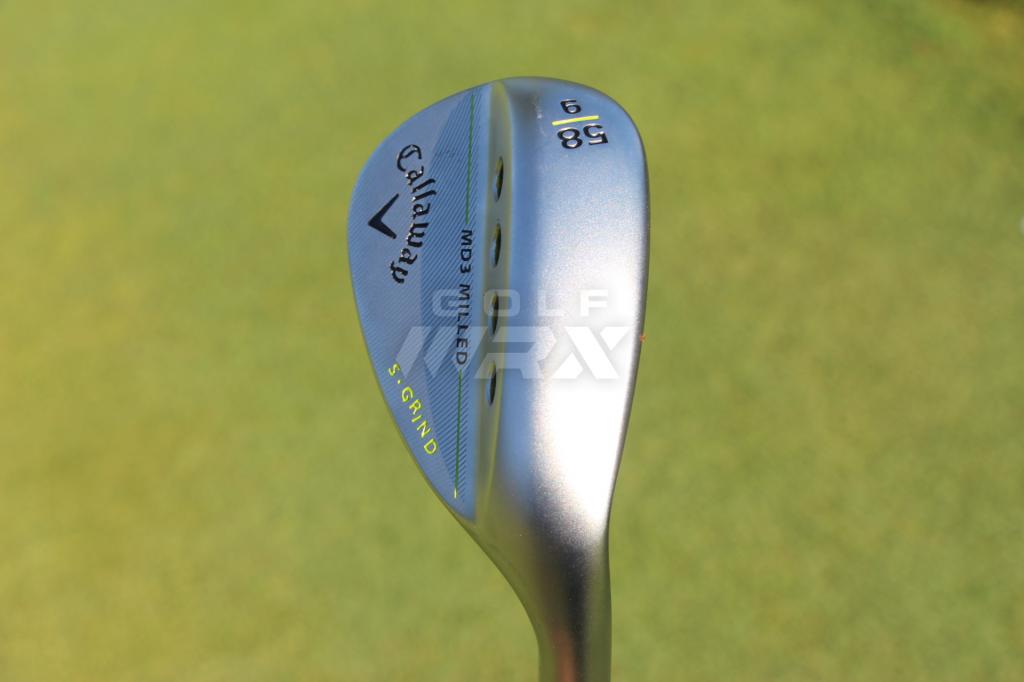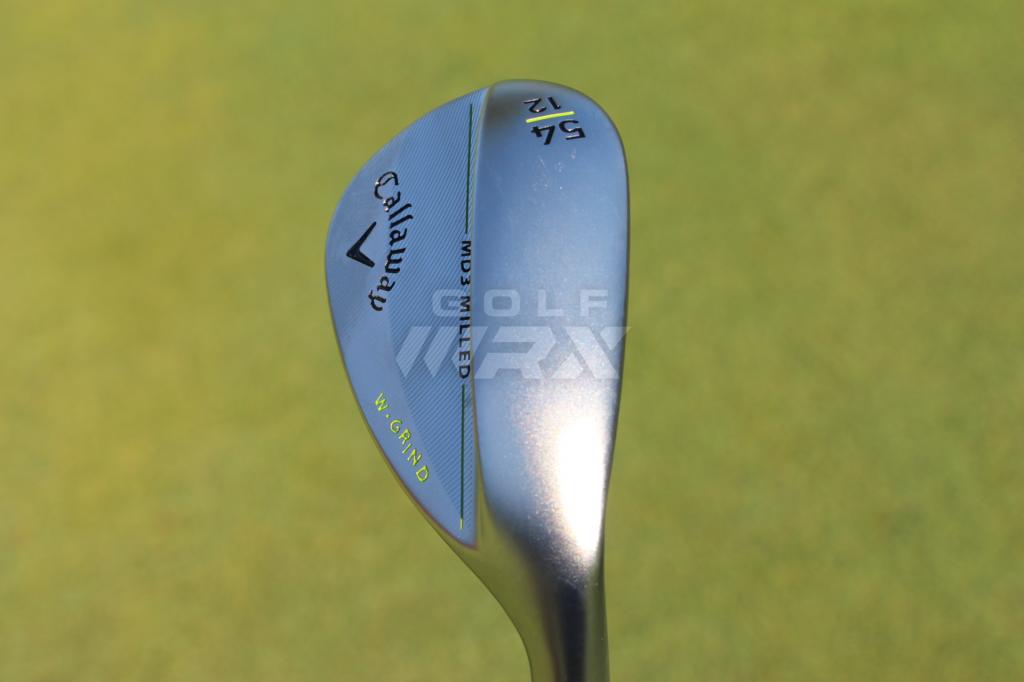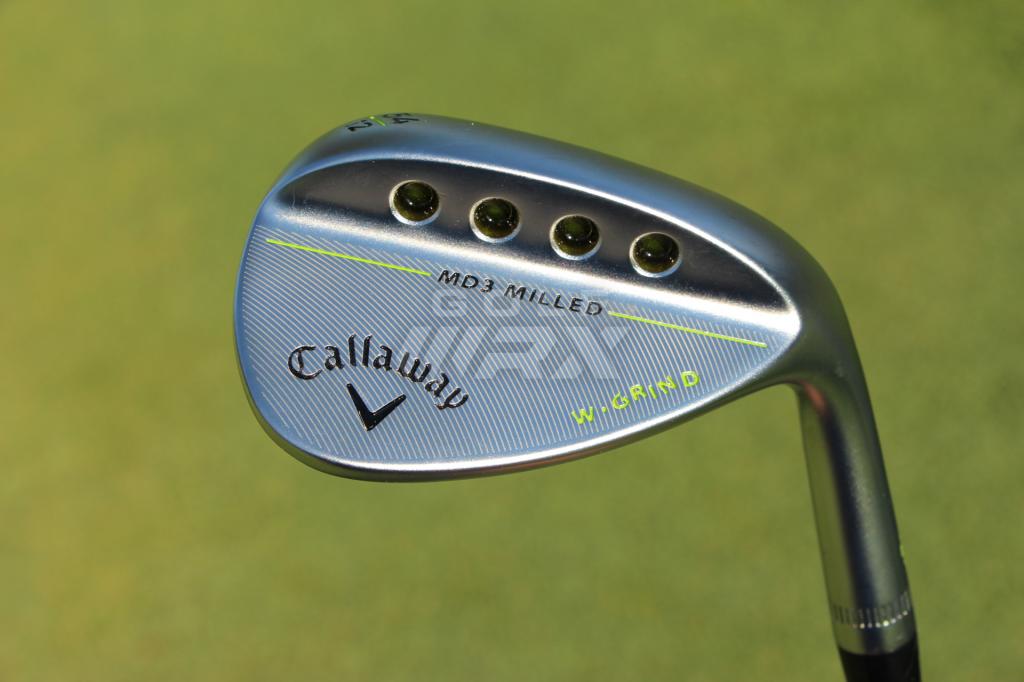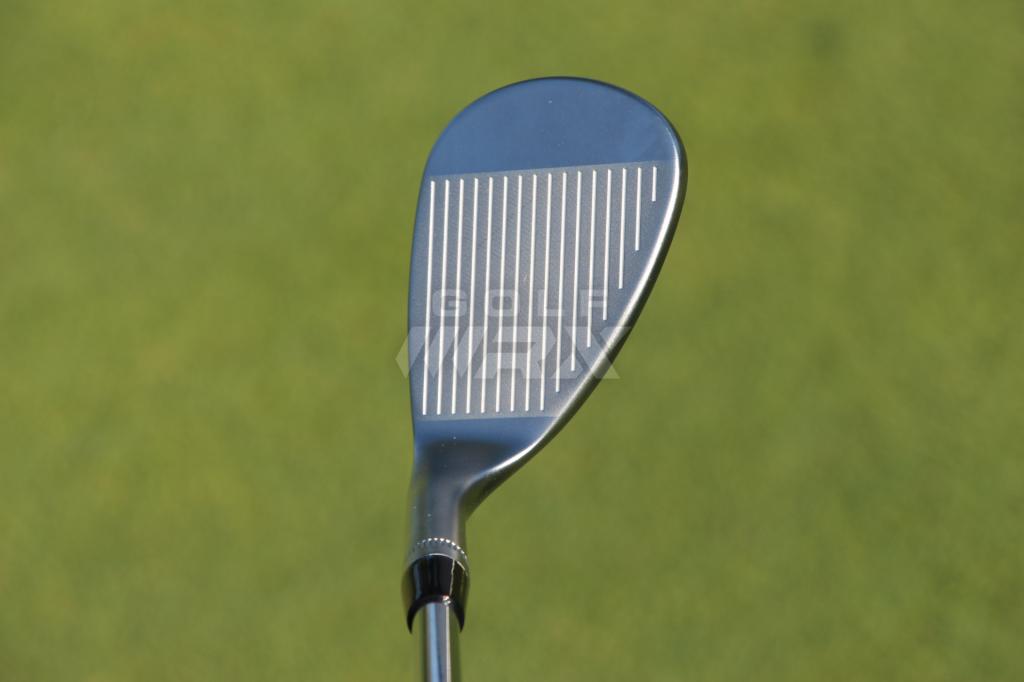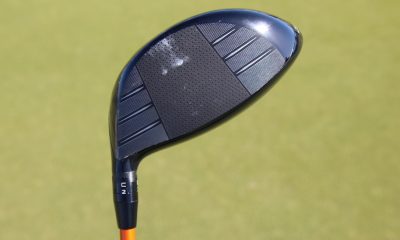Wedge Reviews
Callaway 2012 Forged Wedges: Editor Review
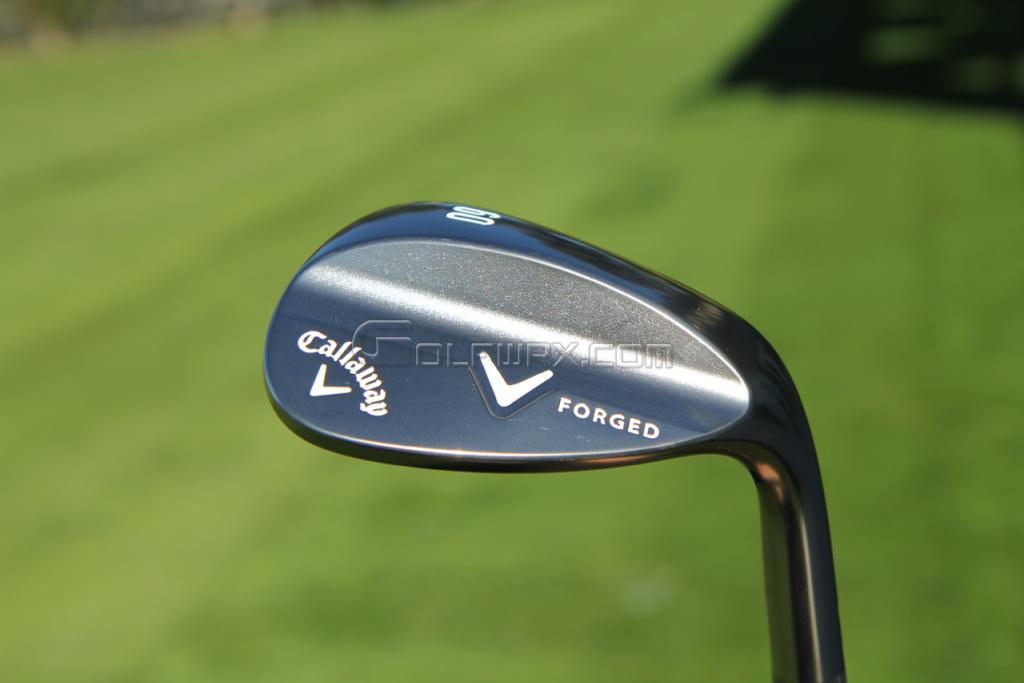
 Editor Review by golfware
Editor Review by golfware
Introduction:
Just a little about myself.
Age: 40 (yeah, that’s right)
Handicap: 6 handicap, play several times a week (9 holes during the week mostly).
Driver swing speed that’s in the 105-111 mph
6-iron swing speed of about 93 mph
I like to take a divot on full wedge shots, although I prefer to CLIP the ball on chips and pitches.
Pros:
FEEL, FEEL & SPIN!!! Plenty of bounce when you need it, but modified C-grind to help you when you don’t. Gotta love that. Excellent finishes as well, dark chrome and copper. Uber-spin considering conforming grooves. Very nice leading edge grind to help CLIP it off the turf.
Cons:
If you’re used to the look of the Spin Milled’s or the CG series from Cleveland, the increase number of grooves may be a turn off.
Bottom Line
This “once skeptic” is now a confirmed believer of these wedges. Some of the best wedges on the market in my opinion, and I’ve tried them all.
The Review…
Tested:
50*, 54* and 58* Callaway 2012 Forged wedges, stock shafts, dark chrome finish
Look:
Well, these wedges speak for themselves. I went with a 50/54/58 in the dark chrome finish and they are just so pure. Very clean at address, very clean sole. Yes, at first, I was put off by all of the grooves on the face, coming from Spin Milled’s and CG16’s. Even my 1018 Forged look similar, but these, MAN there are a lot thin grooves. I get that, it does take a bit to get use to, but truth to told, they help frame the ball really well. Not necessarily the easier to clean, but man, they look sharp, without that MD look of “I’m going to EAT this golf ball as an appetizer!”
I LOVE both finishes, the dark chrome and the copper (Cu). I find both very smooth looking, and although I didn’t go with the Copper, I’m game them in a NY minute.
At address, each one frames the ball really well. Just sets up very square to the ball, regardless of the loft. I also really like the look of the modified C-grind with plenty of bounce where I need it. I’m a high bounce-lover, and these seem to work well from a look standpoint.
Performance/playability:
Okay seriously. These babies SPIN! Case in point, I’ve been using the 58 around the greens when I short-side myself. I can open the face up a smidge, open my stance and hit this flop that just STOPS. Whoa. I was use to the CG16’s, that will roll out a bit more.
Another case in point, had a little 70 yard pitch into a green (#6 at TPC Harding Park). Hit a little ¾ pitch shot with my 54. The ball was flushed, tracked right toward the flag in the middle of the green. It stopped just short, one stop and came to a dead stop 1 foot from the green. My playing partner just said “D@MN!” Even I said it too.
Out of deep rough, these wedges just go in, get the ball out and stop it onto the green. Very easy. Off tight lies, the leading edge is such that I can really clip it pure. Again, my buddy, who didn’t even see me chip, just said “of that was pure just by the sound”. I don’t want to rave about these too much, but whoa, they really do perform.
I use the 50* of full shots from 100-115 yards. The jury is still out a bit on the distance, but the flight of the ball was there. I also use the 50* for long pitches and chips around the green, and they perform just as admirably. I can really see my short game being crisp with these babies. I’ve used the 58* to just fly a short 30 yard chip over a bunker and onto the green, about feet from the pin. Out of light rough, deep rough, fairway and bunkers, I haven’t found anything wrong. Period. With the X Forged wedges, I like them “okay” out of the bunkers, but hated them on full shots and pitches. Just maybe TOO much spin all the time. Not with these.
Feel:
Okay, these are FORGED! YES!! Can I get an AMEN?! Forged baby!!! So pure on chips and pitches. So sweet on full shots. Time will tell how they hold up for the duration of the season, but whoa, what a great feeling wedge. I just can’t describe it well enough, to be up front. You’ve got to hit them to experience and enjoy hitting these. They provide plenty of feedback (which forged wedge/iron doesn’t right?? LOL), and will let you know if you hit it off the toe or heel (not on purposed of course). We have a ROCK HARD practice facility with fake greens, and range balls feel like Pro V1’s with these wedges, and I can get the ball to stop ON the green with them too. You won’t be disappointed.
Overall bottom line:
Overall, as much as I’m shocked to say this, the 2012 Callaway Forged Wedge is a WINNER. You can easily ask any of my close personal friends and golfing buddies and they will all confirm my hatred for the Callaway X Forged wedge. I hated those wedges so much that I didn’t even give the JAWS a chance. It was that bad. NOT with these. They are pure, clean and SPIN the ball a ton. If you want to improve your short game, definitely give these a try. The modified C-grind really helps to be able to open the club up, yet hit it crisp without digging or skulling the ball across the green. They are great. Well, I’ll stop “typing now” and let the pictures and video do the talking. Cheers everyone!
- LIKE10
- LEGIT1
- WOW1
- LOL2
- IDHT1
- FLOP1
- OB2
- SHANK2
Equipment
Titleist launches new Vokey WedgeWorks 60 “A” grind wedge
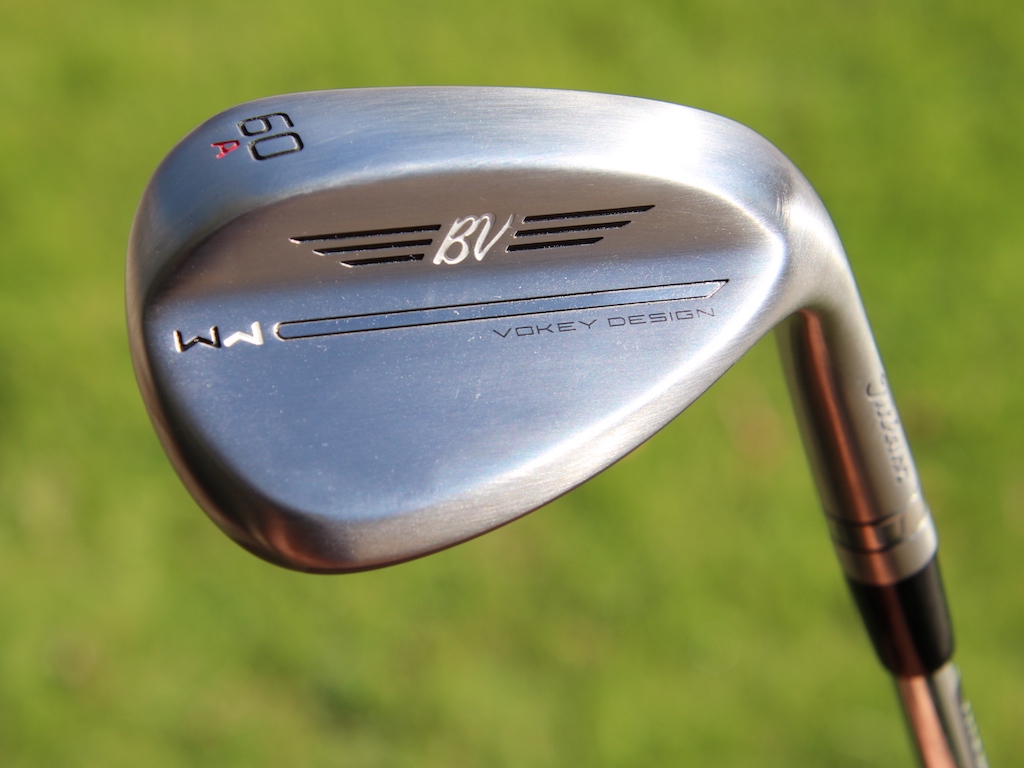
The menu of grind options just got more expansive for Titleist Vokey WedgeWorks consumers, with the addition of a “60A” wedge to the lineup.
Previously, Vokey offered seven main grind options for players with various needs:
- T Grind: The narrowest sole option, which is widely used by PGA Tour players, and has low bounce
- L Grind: The lowest bounce option, with heel, toe and trailing edge relief for maximum versatility
- F Grind: An all-purpose grind that’s best for full wedge shots played with a square face
- S Grind: A neutral grind, best for full shots played with a square face
- M Grind: A versatile grind that’s for players who want to open and close the face for various shots
- D Grind: A higher-bounce wedge that’s for players with a steep swing angle, but want to play shots from various club orientations
- K Grind: The highest-bounce wedge option, with heel, toe and trailing edge relief for versatility
Titleist has now added the “A” grind, which has actually already been played on the PGA Tour by golfers such as Tom Kim, who used an A-grind to win three times on the PGA Tour, Wyndham Clark, who won the U.S. Open using an A-grind, and Max Homa, who used an A-grind at the 2023 Open Championship.
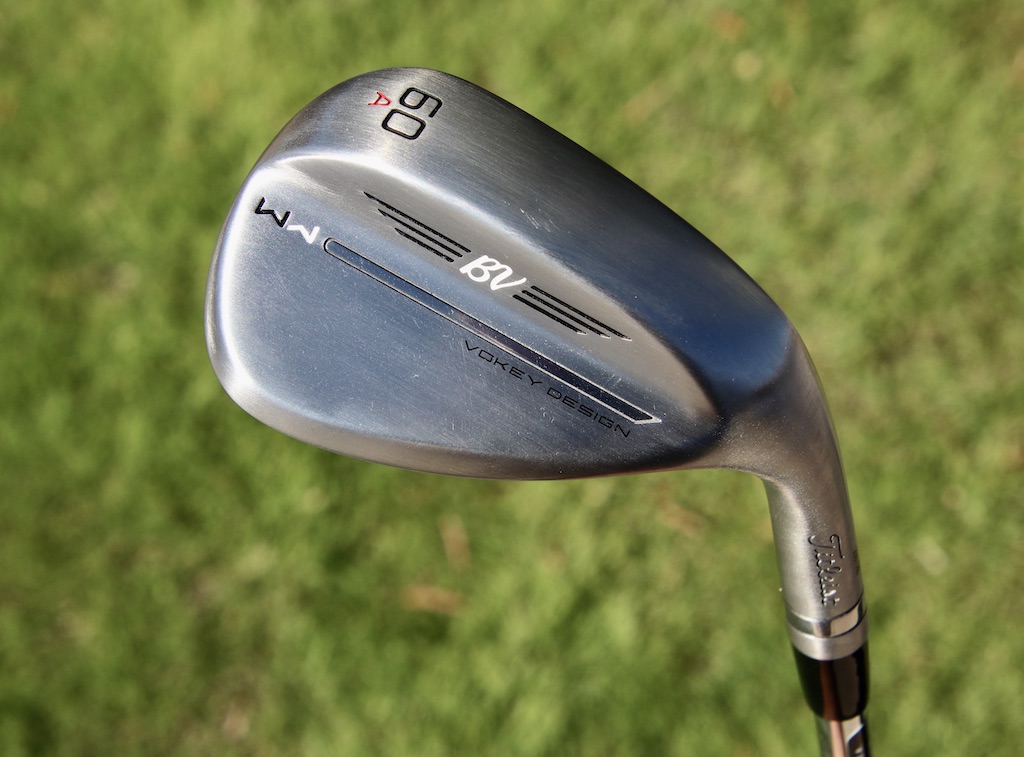
According to Titleist, the Vokey WedgeWorks 60A wedge is a low-bounce option that’s for golfers with a shallow angle of attack, and who play in firmer conditions. It has a “smoothed-out” sole for a faster feel through the turf, helping some golfers slide under the ball easier at impact.
“The most important club for me, probably in my bag, is this A grind,” Clark said, according to a Titleist press release. “I use the SM9 60-degree A grind, which is a low bounce 60 that is very versatile. I’m able to – on tight lies, rough, wet lies, firm lies, whatever it is – hit the shot I want, and with the amount of spin I want, trajectory and everything.”
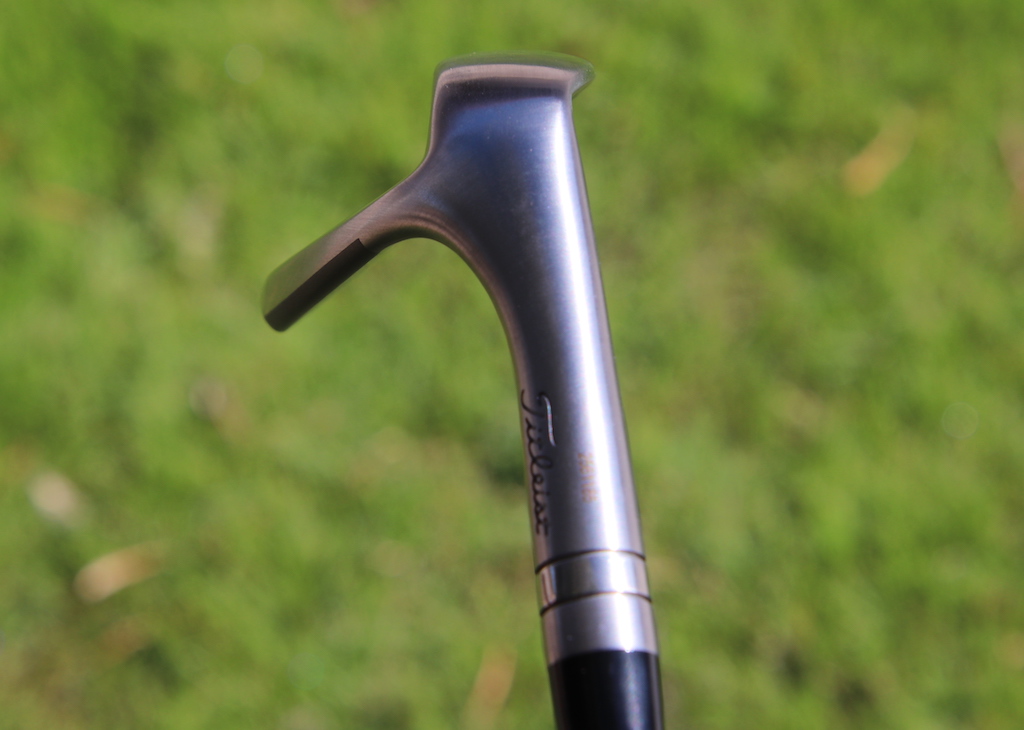
Apparently, Geoff Ogilvy played a large part in the A-grind coming to life.
“I spoke with Geoff (Ogilvy), and we got on the topic of Australian golf courses and how they compared to courses in America, and around the world,” said Vokey Tour Rep Aaron Dill, in a press release. “I asked him some specific questions, which resulted in an idea to design another lob wedge grind option that complemented the firm links-style conditions that players face – not just in Australia and Europe – but globally. Geoff has always been a low bounce player in his 60-degree, so I took his 60.04L wedge and removed the ribbon, resulting in a grind that moves through the turf quickly with very little resistance.”
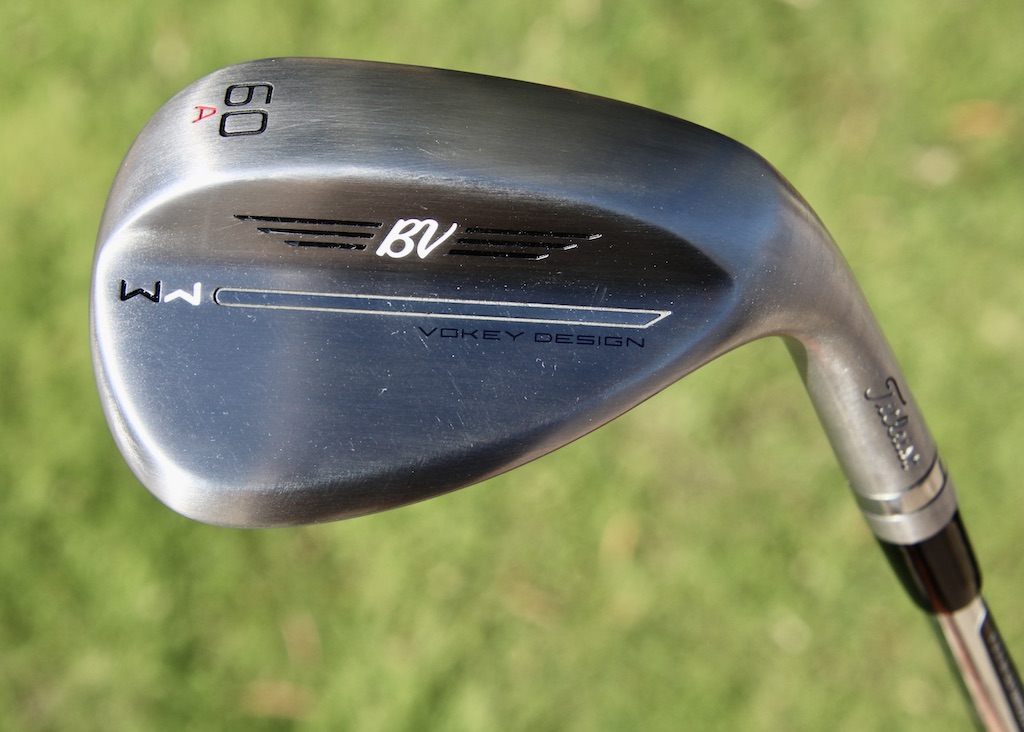
The new Vokey A-grind will be available on Nov. 7, selling for $225 each. Custom options include up to six toe engravings, 10-15 character stamping options, the Flight Line alignment feature option, and custom shafts/grips/ferrules are available.
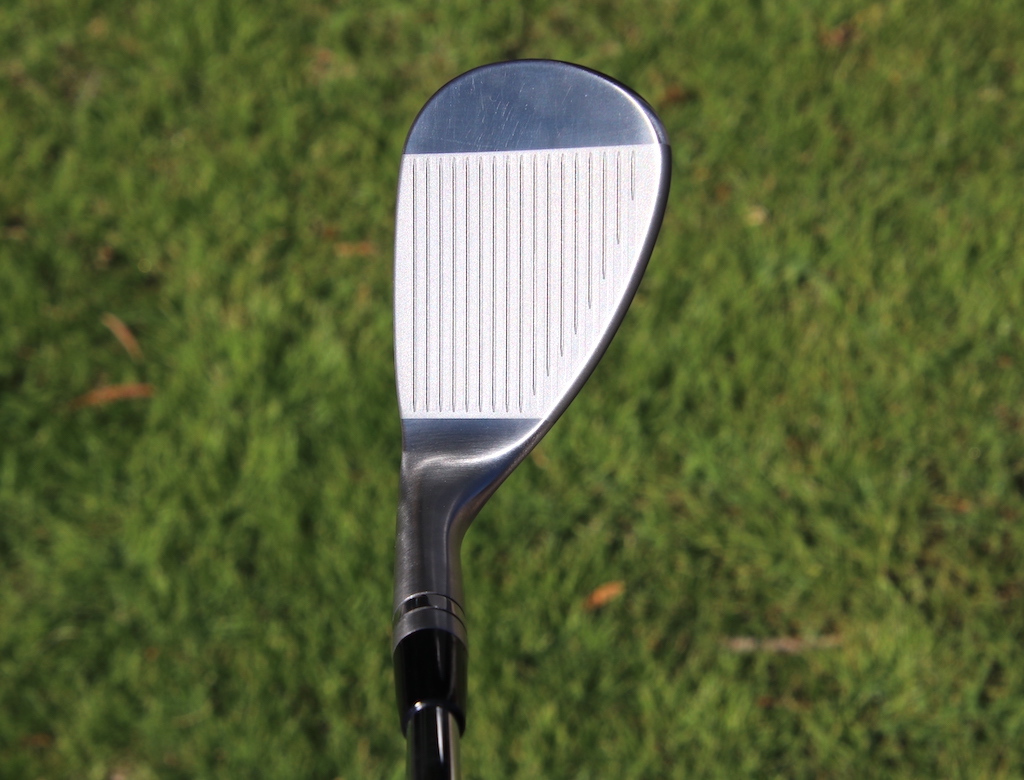
Click here to read more about why the bounce/grind of your wedge actually matters
View this post on Instagram
- LIKE30
- LEGIT6
- WOW2
- LOL0
- IDHT3
- FLOP0
- OB1
- SHANK2
Reviews
In-Depth Review: Titleist Vokey SM6 Wedges
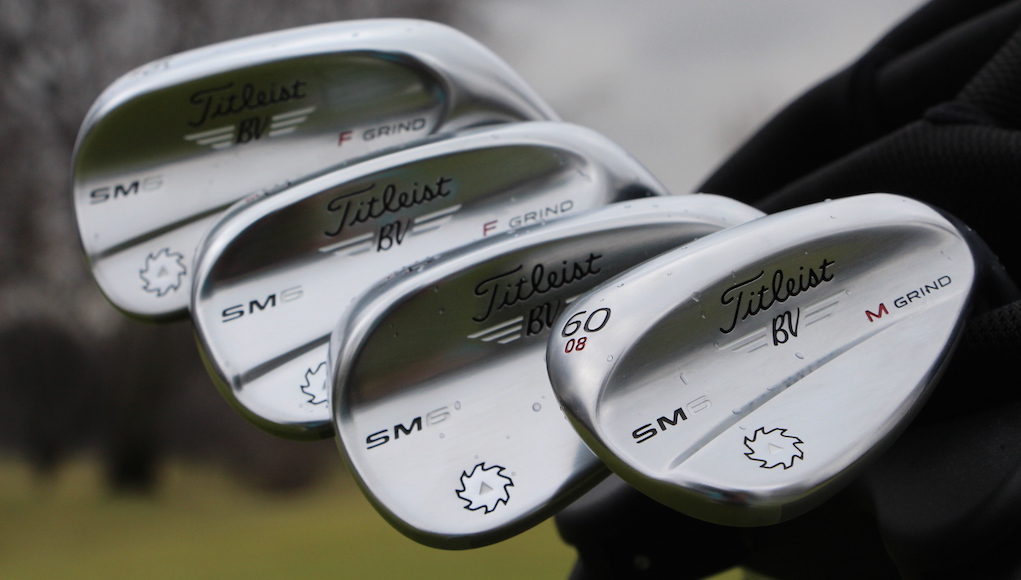
Pros: A new, progressive CG design helps the low-lofted wedges fly a few yards farther, and improves the feel of the high-lofted wedges while boosting consistency. With lofts from 46-62 degrees and five distinct grinds, most golfers will be able to find an SM6 wedge that works for them.
Cons: At $149, they’re $20 more expensive than SM5 models.
Who they’re for: All golfers.
The Review
- Price: $149 (MAP)
- Lofts: 46, 48, 50, 52, 54, 56, 58, 60, 62
- Grinds: F (46-56), S (54-60), M (54-62), L (58-60), K (58-60)
- Finishes: Tour Chrome (plated), Steel Gray (plated) and Jet Black (QPQ)
- Stock Shaft: True Temper Dynamic Gold S200
- Construction: Cast (8620 carbon steel)
A glance at Vokey’s new SM6 wedges reveals that something is different. Some golfers will understand the science of why the wedges look like they do, but many won’t. Unlike a lot of new golf club technologies, however, golfers won’t need to be in the know to be impressed. I don’t talk about the “cool factor” in many of my reviews, but the SM6 wedges certainly have it.
Those curves on the back of the SM6 wedges? They create what’s called a progressive center of gravity (CG), which means the weighting of the SM6 wedges varies based on loft. The lowest-lofted SM6 wedges (46-52 degrees) have the lowest CG, the mid-lofted wedges (54, 56 degrees) have a higher CG and the highest-lofted wedges (58-62 degrees) have the highest CG. The three different CG positions match the desired impact area on each wedge’s club face — lower-lofted wedges are generally contacted lower on the face, while higher-lofted wedges are generally contacted higher on the face — to improve trajectory, feel and consistency.
Low-Lofted SM6 Wedges
If you’ve ever wished your Vokey 46-, 48-, 50- or 52-degree wedge flew a little farther, SM6 models will. Vokey says the low-lofted SM6 wedges create about 1.5 mph more ball speed and 3-4 yards more distance, and I buy their claim after testing SM6 wedges that were built to the same specs as my SM5 models on Foresight GC2.
“Distance doesn’t matter with wedges,” you might be saying, and you’re correct in theory. Who cares if your gap wedge goes 110 or 113 yards, as long as you hit it a consistent distance. That’s not the issue, though. Improvements in golf equipment technology have irons flying farther than they ever have, which means more golfers need a club — and maybe even two clubs — between 46-and-52 degrees to bridge the gap between their shortest iron and mid-or-high-lofted wedge.
I’m one of those golfers who needs two wedges to fill the gap. I use a 9 iron that measures 41 degrees and carries about 150 yards. I also use a 54-degree wedge (bent to 55 degrees) that carries about 105 yards. I fill the gap with a 46-degree wedge (bent to 45 degrees) that carries about 135 yards. I prefer its look and feel to the pitching wedge from my iron set because I can vary trajectory more easily with it. I also carry a 50-degree wedge that carries about 120 yards.
An issue I had with the SM5 wedges (46-08 F Grind, 50-08 F Grind) is the same one I’ve always had with other low-lofted wedges. Many times when I tried to hit them a little harder to make them go a few yards farther, they didn’t. Shots often just went higher due to excess spin. I’ve seen countless golfers experience this problem, especially better players.
The biggest improvement to the low-lofted SM6 wedges is that they create a more iron-like ball flight. It’s slight, but their faster trajectory is a little bit less likely to balloon. To me, they also feel slightly softer than the SM5’s at impact.
Probably just as important as the new progressive CG design of the low-lofted SM6 wedges is something that isn’t new — the different bounce options Vokey offers in its 50- and 52-degree wedges. Both the 50- and 52-degree models are offered in F Grinds with effective bounce angles of 8 and 12 degrees. Most manufacturers offer multiple bounce options in their mid- and high-lofted models, but it’s rare to see two different options in low-lofted models.
In July 2015, I traveled to Titleist’s Oceanside, California Test Facility to learn more about the company’s 716 iron line. During the downtime, Titleist offered me an opportunity to be fit for SM5 wedges by the man himself, Bob Vokey. My steeper angle of attack theoretically made me a better fit for the 50-12 F Grind (a 50-degree wedge with 12 degrees of effective bounce), but my results were better with the 50-08 F Grind.
Vokey explained that the reduced bounce helped me contact the ball slightly higher on the face, and that improved my ball flight. That moment cemented how important it is for golfers to be fit for not just their lob wedge, but for as many of their wedges as possible.
Mid-Lofted SM6 Wedges
The mid-lofted SM6 wedges (54 and 56 degrees) are most similar to the SM5 models, as they do not have the weight pads used in the low-lofted and high-lofted wedges. That’s because, according to Vokey representatives, the CG of the mid-lofted wedges was pretty much where it needed to be.
For that reason, the biggest change golfers will notice if they switch to an SM6 from an SM5 is the shaping. Unlike the low-lofted SM6 wedges, which are significantly smaller than SM5 models and have shorter hosels, the mid-lofted SM6 wedges are roughly the same size. There’s no denying, however, that the shaping of the SM6 wedges gives them a more streamlined look. Their toes are more rounded, their top lines are thinner and their par area, the part of a wedge’s top line that conjoins with the hosel, blends more seamlessly.
I’ve given my SM5 and SM6 54-14 F Grind wedges (bent to 55 degrees) to several golfers and had them hit shots with each one to see if they could notice a different in feel. Some told me the SM6 felt softer, while others told me the SM5 felt softer. For that reason, its hard to make an absolute statement about a change in feel in the mid-lofted wedges. I’ve had a few golfers tell me the SM5 wedges look better at address, but many more have preferred the look of the SM6.
Before moving on to the high-lofted wedges, I want to point out two more things; one is specific to the mid-lofted models, one that is not.
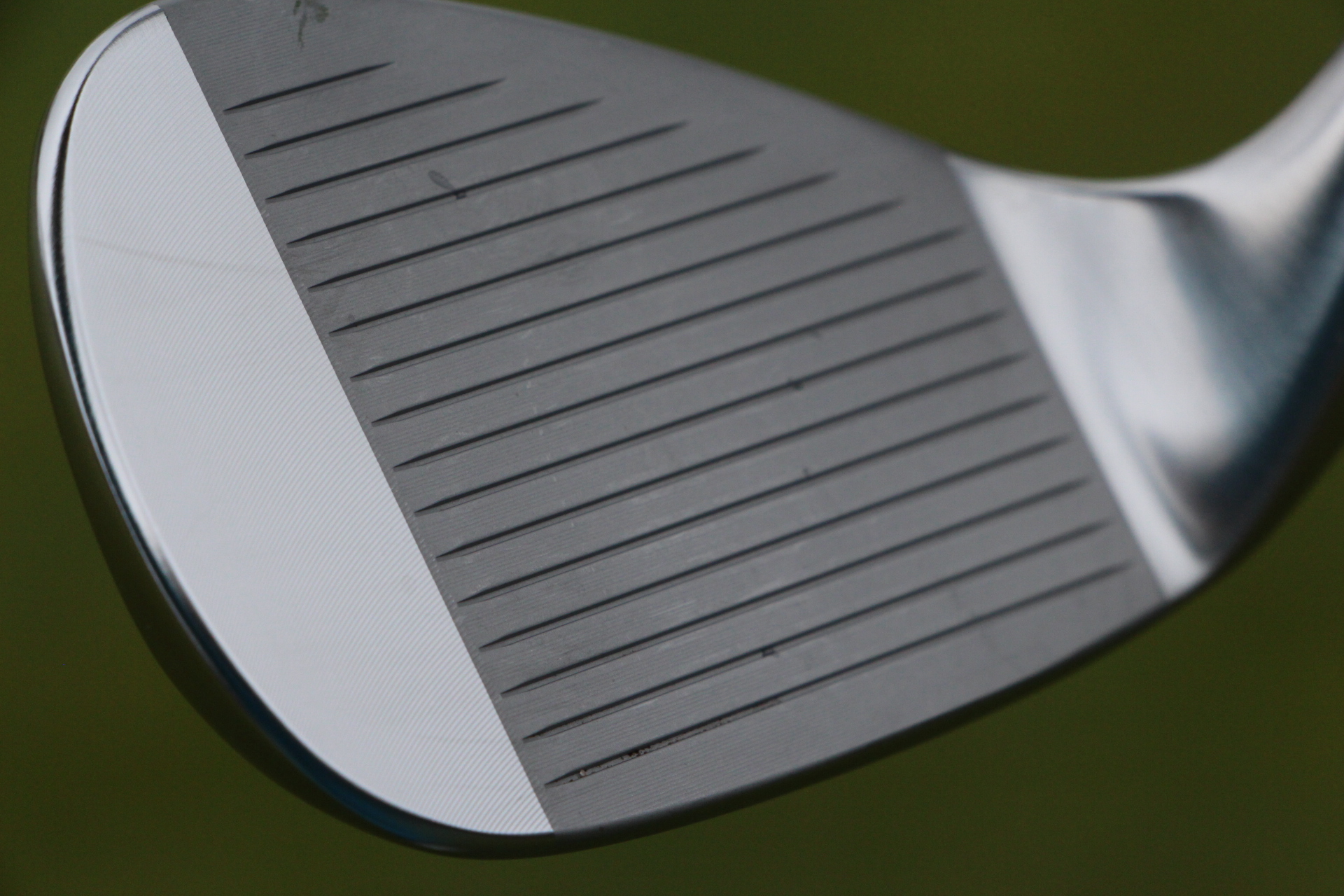
SM6 wedges use Vokey’s new TX4 grooves that feature a parallel face texture to increase spin and consistency.
- Like SM5 models, both the 54 and 56 are available in three different grinds (F, S and M). For the SM6 line, however, the popular M Grind has 2 degrees less effective bounce to make it more versatile from a wider variety of lies.
- All SM6 wedges also feature Vokey’s new TX4 grooves, which use a machine-milled, parallel face texture that Titleist says can increase consistency and sharpens groove edges to add as much as 200 rpm of spin. The SM6 wedges also use the same progressive groove design as the SM5 wedges. The lower-lofted wedges (46-54) use narrower, deeper grooves to displace more debris on square-face shots, while higher-lofted wedges (56-62) use shallower grooves that create more friction on open-face shots.
High-Lofted SM6 Wedges
With a slightly higher CG, the high-lofted SM6 wedges do seem to launch shots slightly lower and with a little more spin than SM5 models, and that’s exactly what most better players want their high-lofted wedges to do. But the change likely won’t be noticed by the majority of golfers. What they will notice, however, is how much better the high-lofted SM6 wedges feel at impact. Every golfer has experienced the “clank” that occurs when a wedge shot is hit too high on the face, or toward the heel or toe at impact. With the high-lofted SM6 wedges, those shots felt softer and more solid.
Due to their higher CG, the high-lofted wedges also seemed to be a little more consistent in my testing on Foresight. Especially when hitting 50-yard shots, I saw that the 60-degree SM6 M Grind wedge seemed to land a little closer my target on mishits. Sometimes it flew 1-2 yards farther than I expected when I contacted a shot slightly on the toe or the heel; sometimes shots just held their line just a little bit better. The difference is small, but can make an difference. We’re all better at making 6-foot putts than we are 9-footers, aren’t we?
As for shaping, the new wedges don’t look the same as the SM5’s at address. They appear slightly larger, and have the same general appearance as the other wedges in the new line.
No discussion of a Vokey high-lofted wedge is complete without mentioning their four distinct sole grinds, which Team Vokey continues to tweak based on its work with Tour players, as well as average golfers. Despite the several improvements to the new wedges, the grinds continue to be one of their main selling points. That’s how powerful using the proper sole grind can be.
Again, it’s best to get fitted, but if you can’t, the chart and list below offers a few starting points.
- If you struggle from the sand, try the K Grind (available in 58, 60). It has the widest sole of any Vokey wedge, and can work well for golfers with steep attack angles. Compared to SM5 K Grind wedges, it has 1-degree more effective bounce to help the wedge better resist digging on square-face shots.
- If you play courses with extremely firm turf conditions, try the L Grind (available in 58, 60). It has the lowest effective bounce (4 degrees), and slightly more camber than SM5 models to goflers resist digging.
- The M Grind (available in 54, 56, 58, 60, 62) will work best for golfers who like to manipulate the face open or closed, while the S Grind (available in 54, 56, 58, 60, 62) is better for golfers who tend to play more square-faced shots. The 58 and 60-degree S Grind wedges have 3-degrees more bounce than SM5 models.
Vokey Custom Options
As noted above, I don’t use a standard SM5 wedge. At Oceanside, Vokey fit me for a V-Grind that’s offered through the company’s Hand Ground Program. According to Titleist representatives, Hand Ground SM6 wedges, which make available Tour-only grinds and enhanced customization options — will be released to the public at a later date.
Do I really need a V-Grind wedge? I must admit, with a little practice I could probably use the SM6 M Grind and hit all the shots I need to hit. But I liked the performance V Grind enough to pay the extra money for it (Hand Ground wedges start at $350 each).
For golfers not willing to pay that much for a completely custom wedge, Vokey offers more affordable custom options to standard SM6 wedges through its WedgeWorks Services. Through the program, golfers can customize the shafts, grips, shaft bands, ferrules, stampings and paintfill of their wedges. I’ve had several wedges customized through WedgeWorks, and the work is always A++.
Should you Upgrade?
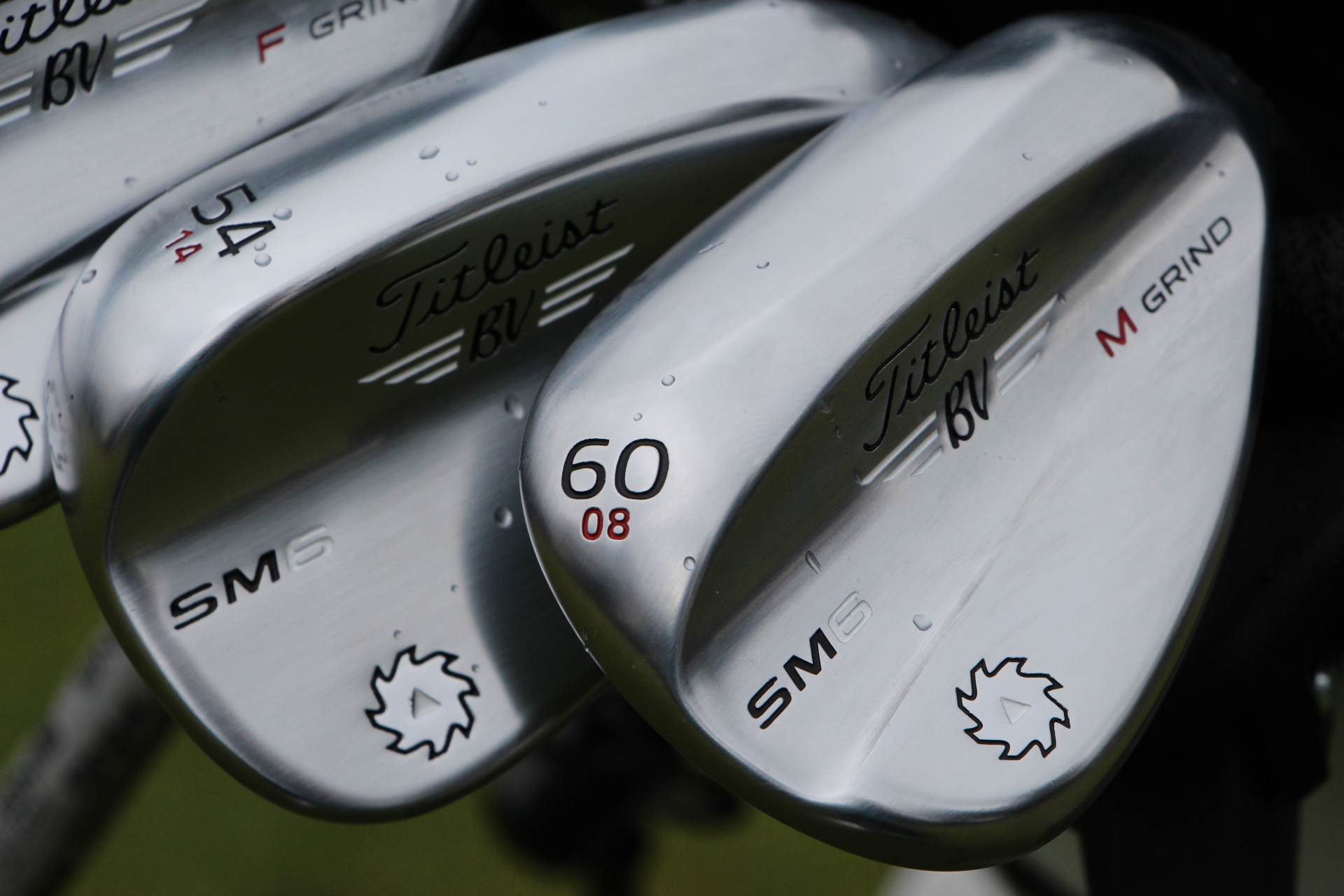
If you’re currently using a set of properly fit SM5 wedges, your transition from them to the SM6 models should be an easy one. Many golfers will see certain benefits from the newer wedges, as I did, but they may or may not warrant an immediate upgrade, especially if their grooves are still fresh.
An aside about buying wedges: Many tournament players purchase two sets of wedges at a time. They practice with one set and use another on the golf course, which keeps their grooves as fresh as possible for tournaments. While it doubles cost, it helps their gamer wedges last longer and adds peace of mind that they’re getting the best possible performance from their wedges on the course.
More questions?
What else do you want to know? I’ll do my best to answer your questions in the comments section.
[wrx_retail_links productid=”80″]
- LIKE296
- LEGIT24
- WOW11
- LOL2
- IDHT1
- FLOP7
- OB4
- SHANK23
Reviews
Review: Callaway MD3 Milled wedges
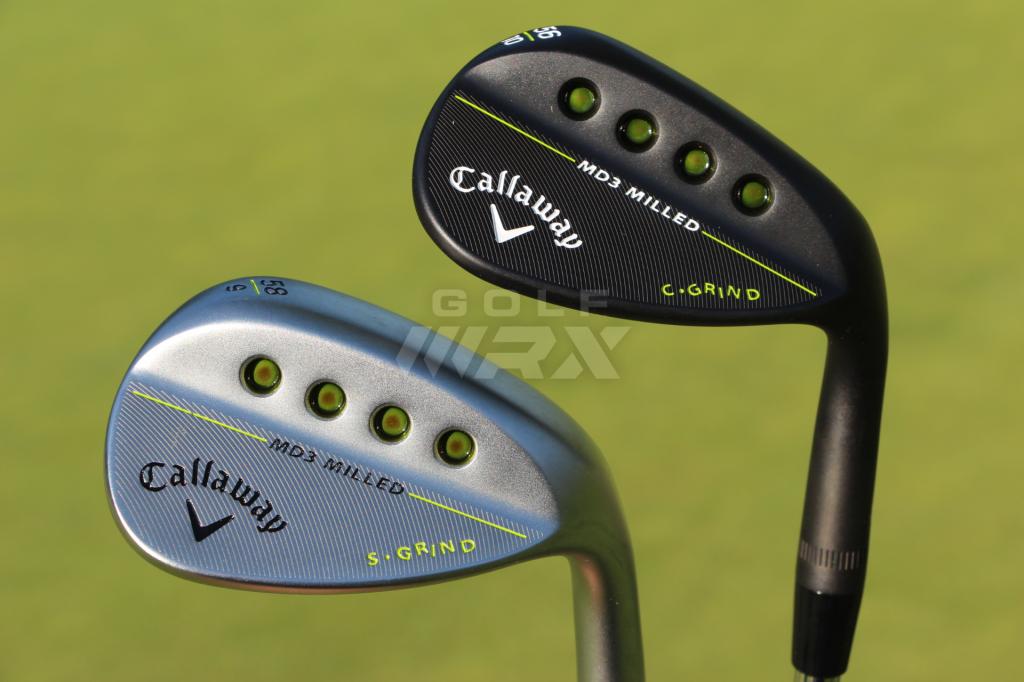
Pros: Options are plentiful with the MD3 Milled wedges. There are three different sole grinds, two finishes and a wide range of lofts (46-60 degrees). Low-lofted, mid-lofted and high-lofted wedges are each equipped with a distinct groove design that’s tailored to shot-specific needs.
Cons: Wedge heads are not able to be customized with stampings, engravings or paint fill. Unlike Callaway’s Mack Daddy 2 wedges, the MD3 Milled are not forged.
Who they’re for: Anyone can play the MD3 Milled wedges, especially with the addition of the wider-soled “W Grind.”
The Review
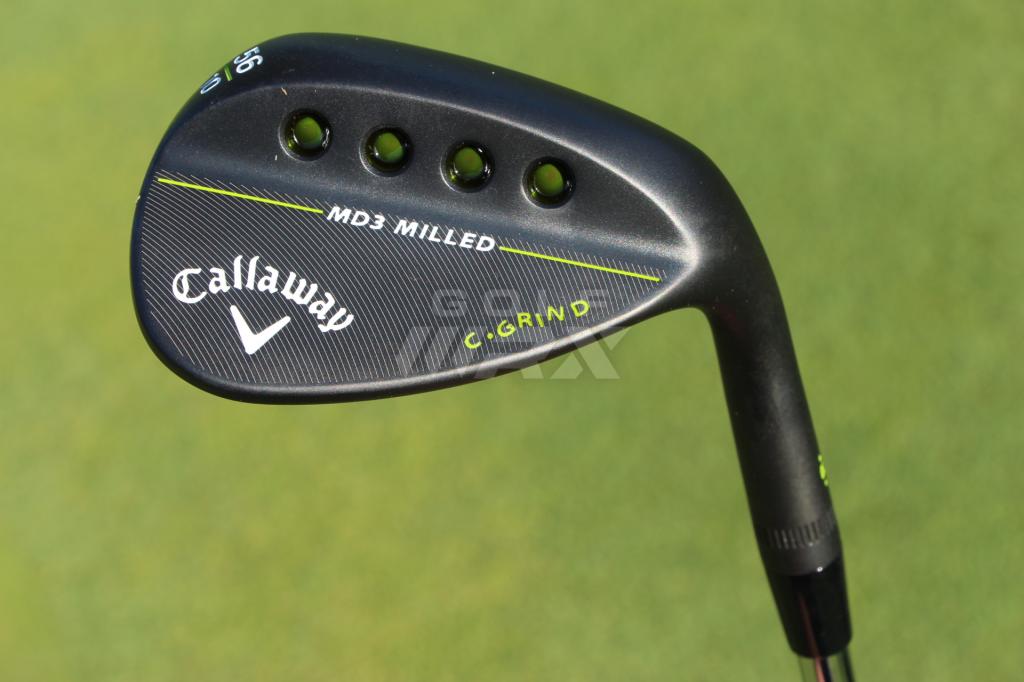
- Lofts available: 46, 48, 50, 52, 54, 56, 58 and 60 degrees
- Grinds: S Grind (46-60), W Grind (54-60), C Grind (56-60)
- Finishes: Matte Black (46-60) and Satin Chrome (46-60)
- Price: $129.99
- Stock Shaft: True Temper Dynamic Gold S300
New and improved are popular terms in the golf equipment world, but generally there’s more emphasis on the “new” part than the “improved” part. Fortunately, what’s new about Callaway’s MD3 Milled wedges also offers noticeable improvements over previous models from the company.
So what’s new and improved about the MD3 Milled wedges? Here are five things to know about them.
Throwing weight around
Each MD3 Milled wedge has four colored ports in its rear cavity. Weight was removed from those areas to give the wedges a higher-toe design that moves the center of gravity (CG) higher for a slightly lower launch and more spin — exactly what the best golfers want from their wedge shots.
For me, it wasn’t the fact I could hit the 58.9 S Grind with as much spin as I wanted; it was the ease with which I was able to alter the trajectory. With the 54.12 W Grind, I had no problem hitting the ball high to front pin locations, or flighting shots that minimized the effect of the wind.
Shot-specific grooves
With the MD3 Milled, Callaway offers three specific groove patterns to optimize launch and spin based on the loft of the wedge. Pitching and gap wedges (46-52 degrees) have Callaway’s 30V grooves, which have 30-degree side walls that perform best on the more aggressive, downward strikes that are common with the clubs. Mid-lofted wedges (54-56 degrees) use Callaway’s 20V grooves, which have 20-degree side walls that excel on bunker shots and full swings. Lob wedges (58-60 degrees) have Callaway’s 5V grooves, which create maximum spin on shots around the green.
In testing, I was most impressed with the 5V groove, which does a remarkable job moving additional moisture and debris away from the ball. That came in quite handy when navigating juicy lies around the green.
More refined grinds
The MD3 wedges are available in three distinct sole grinds: S Grind, C Grind and W Grind. My thoughts on each are below.
S Grind: The “S” is the most versatile of the three available grinds. I’m tempted to say that S stands for “Swiss Army Knife,” as there was no shot I couldn’t hit with the grind. It was the most consistent grind on full swings from the fairway and tight lies, and more than held its own out of both light and deep rough. There’s no doubt that the S Grind will fit the majority players, and there’s absolutely nothing wrong with bagging the S Grind in two, three or four different wedges, depending on your bag setup.
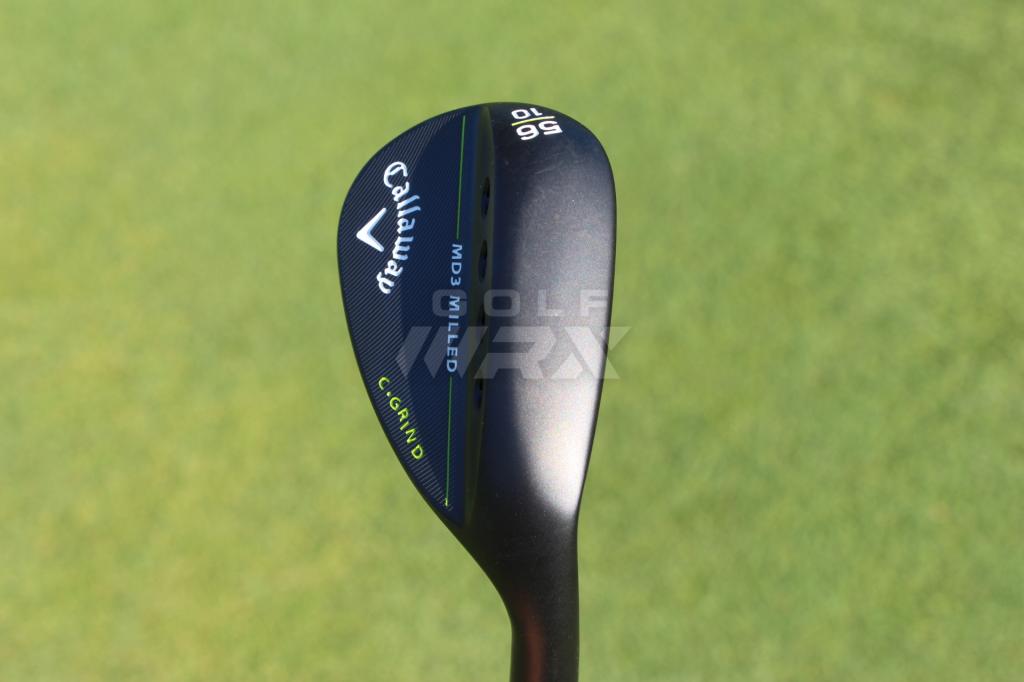
C Grind: This grind offers more heel and toe relief than the S Grind, creating an effectively thinner sole that excels in firmer conditions. While it doesn’t play nice with steep angles of attack, the additional relief in both the heel and toe did keep the head moving through the rough and allowed the leading edge to sit nicely under the ball at address — especially on open-faced shots. That adds versatility for golfers who hit a lot of specialty shots around the green.
W Grind: The W Grind is ideal for bunker play, messy lies and players with steep attack angles. It was my favorite grind, because it seemed to get better the closer I got to the hole. Out of both light and deep rough, the W Grind operated like one of those old ginsu knives, but without the lame sales pitch. Getting up and down from gnarly lies around the green felt entirely too easy. And if the lie was clean and the turf was on the softer side, I had no problem hitting aggressive shots with a square or opened club face because I knew the wider sole would resist digging. Especially on less-than-full shots from inside 100 yards, the W Grind quickly earned the go-to spot in my bag.
Two finishes
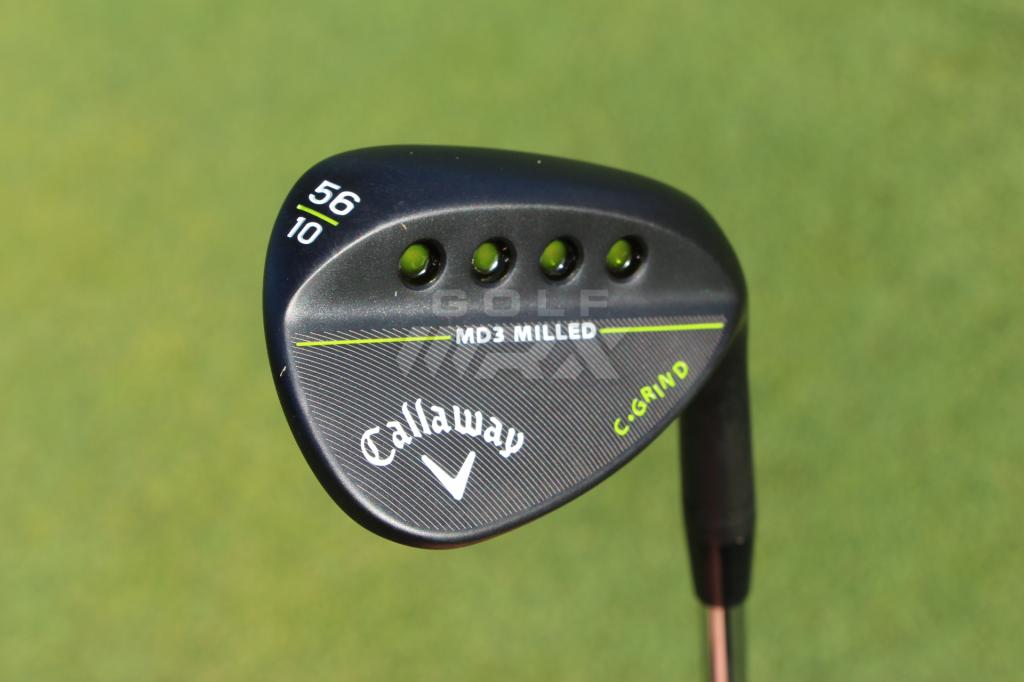
The MD3 Milled’s Matte Black finish (above) will wear and rust over time, while the Satin Chrome, which is plated, will show less wear but produce slightly more glare on sunny days.
Although the MD3 Milled wedges aren’t forged — they’re cast from 8620 steel — both finishes felt fantastic with an edge in softness going to the Matte Black.
Looks to get emotional about
Last but not least, the MD3 Milled are an awesome choice if you favor a teardrop shape at address. In that regard, the MD3 Milled approaches aesthetic perfection. The slightly raised toe and marginally straighter leading edge, compared to previous models, gives the wedge a clean look that balances angular lines with subtle curves.
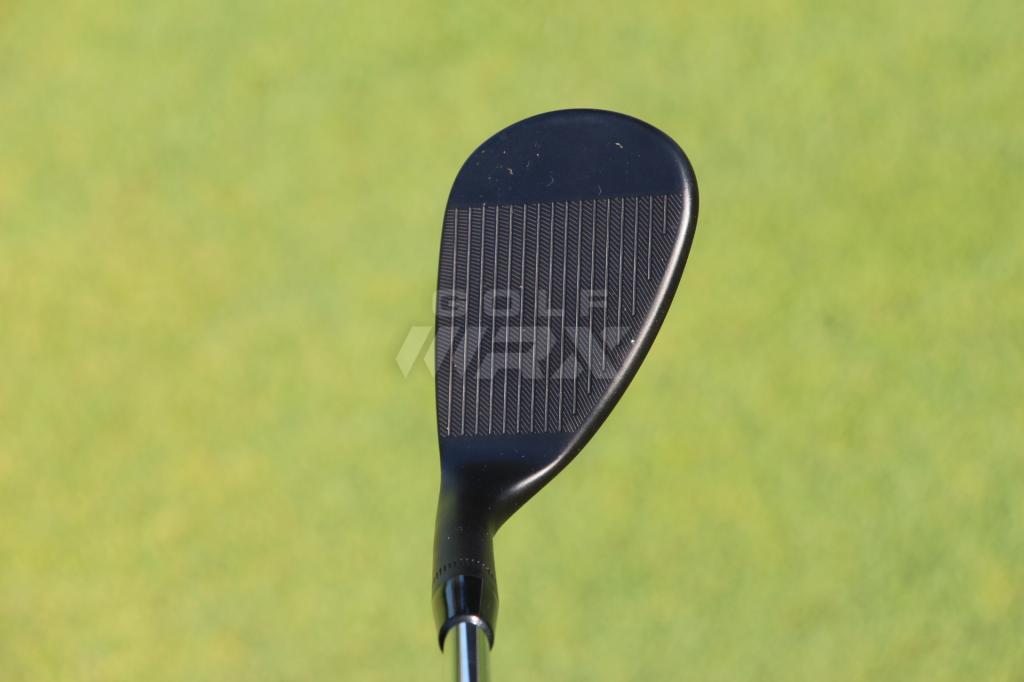
Notice the added sole curvature visible at address in this 56-degree wedge, which is a result of its C Grind.
For all the time we spend looking at the face of the wedge, many golfers are concerned about the appearance of the club as it sits in the bag. Some will call the cavity of the MD3 Milled is a bit gaudy, but others will see the four luminescent ports and green accents as fun and recognizable.
The Takeaway
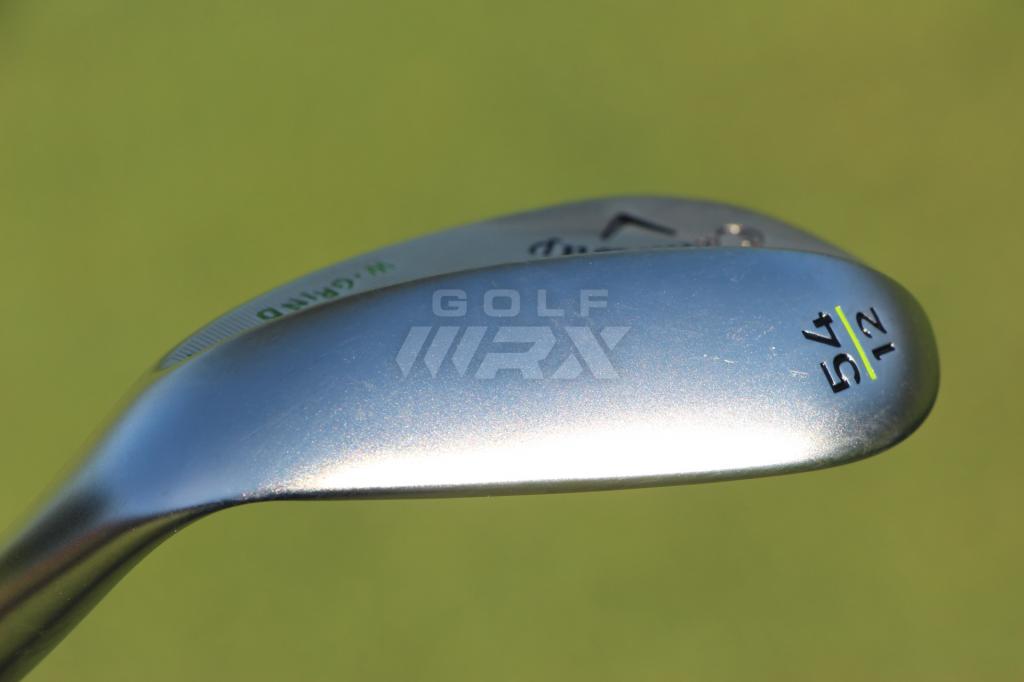
The W Grind will work best for golfers who play golf in soft conditions, as well as those looking for improved sand play.
The MD3 Milled are the best production wedges Callaway has released in the past decade for a variety of reasons. At $129.99, the three distinct grinds and two finish options should cover the needs of most interested golfers. The shaping of the wedges is also so beautiful at address, and I found them to look and feel as good as leading wedge models.
The lack of custom options — stampings, paintfill, etc — isn’t a deal breaker, but does leave some room for improvement. At the end of the day, however, wedges should judged on how they perform. With an improved weighting scheme and loft-specific grooves, Callaway put performance first with the MD3 Milled and it won’t go unnoticed.
[wrx_retail_links productid=”48″]
- LIKE271
- LEGIT46
- WOW42
- LOL13
- IDHT10
- FLOP13
- OB3
- SHANK26
-

 19th Hole2 weeks ago
19th Hole2 weeks agoJohn Daly stuns fans into silence with brutal opening tee shot on PGA Tour Champions
-

 19th Hole6 days ago
19th Hole6 days agoThings got heated at the Houston Open between Tony Finau and Alejandro Tosti. Here’s why
-

 19th Hole3 days ago
19th Hole3 days agoReport: Tiger Woods has ‘eliminated sex’ in preparation for the 2024 Masters
-

 19th Hole2 weeks ago
19th Hole2 weeks ago2-time major champ announces shock retirement from the sport at age of 33
-

 19th Hole3 weeks ago
19th Hole3 weeks agoEdoardo Molinari reveals the latest PGA Tour golfer to turn down ‘good offer’ from LIV Golf
-

 19th Hole2 weeks ago
19th Hole2 weeks agoCharlie Woods finds it tough going on American Junior Golf Association debut
-

 19th Hole3 weeks ago
19th Hole3 weeks agoScottie Scheffler had an interesting response when asked how he ‘quiets the noise’ following Players victory
-

 19th Hole5 days ago
19th Hole5 days agoAddiction, spinal fusion, and scam artists – Everything Anthony Kim revealed in candid interview with David Feherty

